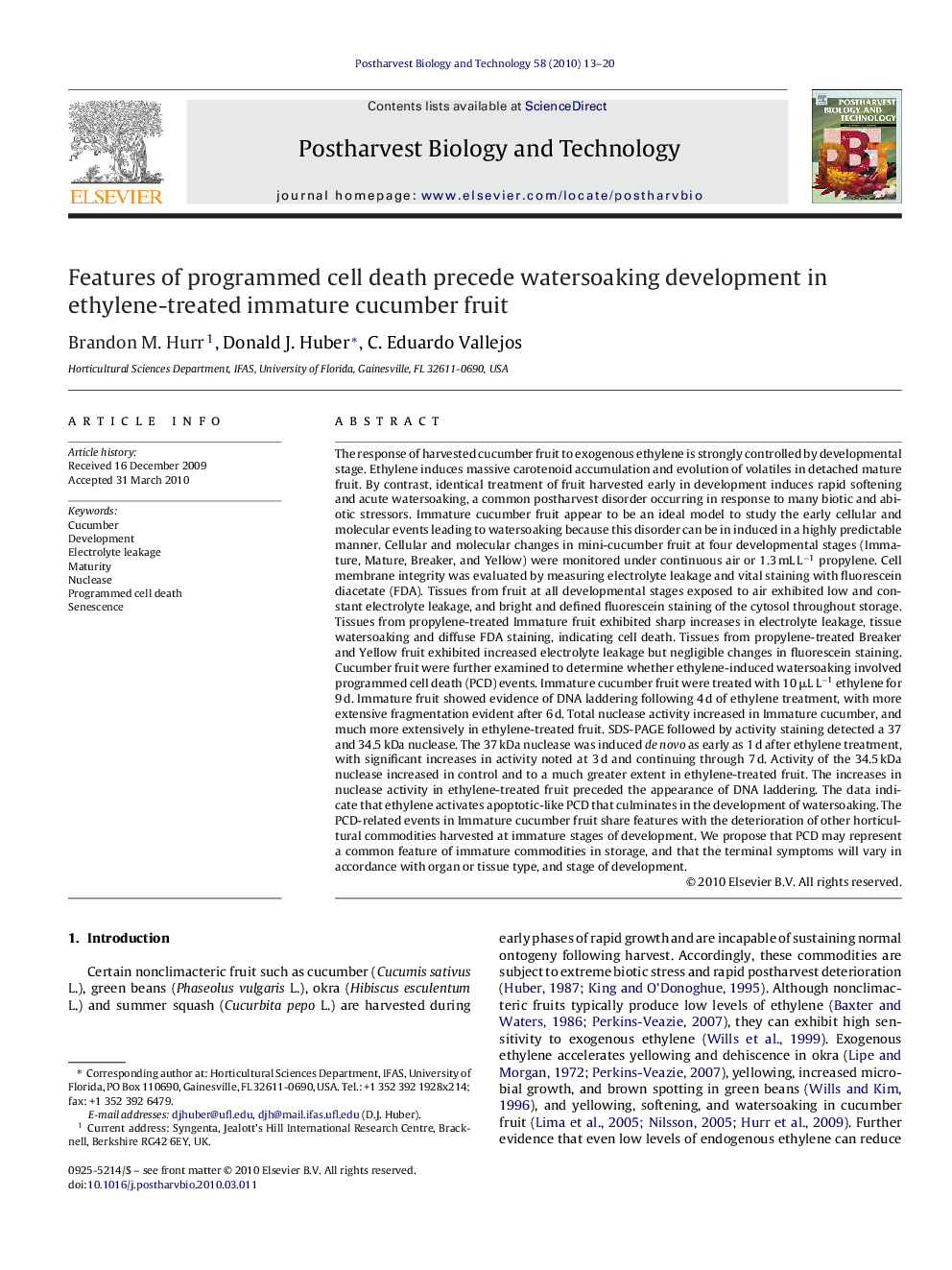| کد مقاله | کد نشریه | سال انتشار | مقاله انگلیسی | نسخه تمام متن |
|---|---|---|---|---|
| 4519008 | 1322812 | 2010 | 8 صفحه PDF | دانلود رایگان |

The response of harvested cucumber fruit to exogenous ethylene is strongly controlled by developmental stage. Ethylene induces massive carotenoid accumulation and evolution of volatiles in detached mature fruit. By contrast, identical treatment of fruit harvested early in development induces rapid softening and acute watersoaking, a common postharvest disorder occurring in response to many biotic and abiotic stressors. Immature cucumber fruit appear to be an ideal model to study the early cellular and molecular events leading to watersoaking because this disorder can be in induced in a highly predictable manner. Cellular and molecular changes in mini-cucumber fruit at four developmental stages (Immature, Mature, Breaker, and Yellow) were monitored under continuous air or 1.3 mL L−1 propylene. Cell membrane integrity was evaluated by measuring electrolyte leakage and vital staining with fluorescein diacetate (FDA). Tissues from fruit at all developmental stages exposed to air exhibited low and constant electrolyte leakage, and bright and defined fluorescein staining of the cytosol throughout storage. Tissues from propylene-treated Immature fruit exhibited sharp increases in electrolyte leakage, tissue watersoaking and diffuse FDA staining, indicating cell death. Tissues from propylene-treated Breaker and Yellow fruit exhibited increased electrolyte leakage but negligible changes in fluorescein staining. Cucumber fruit were further examined to determine whether ethylene-induced watersoaking involved programmed cell death (PCD) events. Immature cucumber fruit were treated with 10 μL L−1 ethylene for 9 d. Immature fruit showed evidence of DNA laddering following 4 d of ethylene treatment, with more extensive fragmentation evident after 6 d. Total nuclease activity increased in Immature cucumber, and much more extensively in ethylene-treated fruit. SDS-PAGE followed by activity staining detected a 37 and 34.5 kDa nuclease. The 37 kDa nuclease was induced de novo as early as 1 d after ethylene treatment, with significant increases in activity noted at 3 d and continuing through 7 d. Activity of the 34.5 kDa nuclease increased in control and to a much greater extent in ethylene-treated fruit. The increases in nuclease activity in ethylene-treated fruit preceded the appearance of DNA laddering. The data indicate that ethylene activates apoptotic-like PCD that culminates in the development of watersoaking. The PCD-related events in Immature cucumber fruit share features with the deterioration of other horticultural commodities harvested at immature stages of development. We propose that PCD may represent a common feature of immature commodities in storage, and that the terminal symptoms will vary in accordance with organ or tissue type, and stage of development.
Journal: Postharvest Biology and Technology - Volume 58, Issue 1, October 2010, Pages 13–20